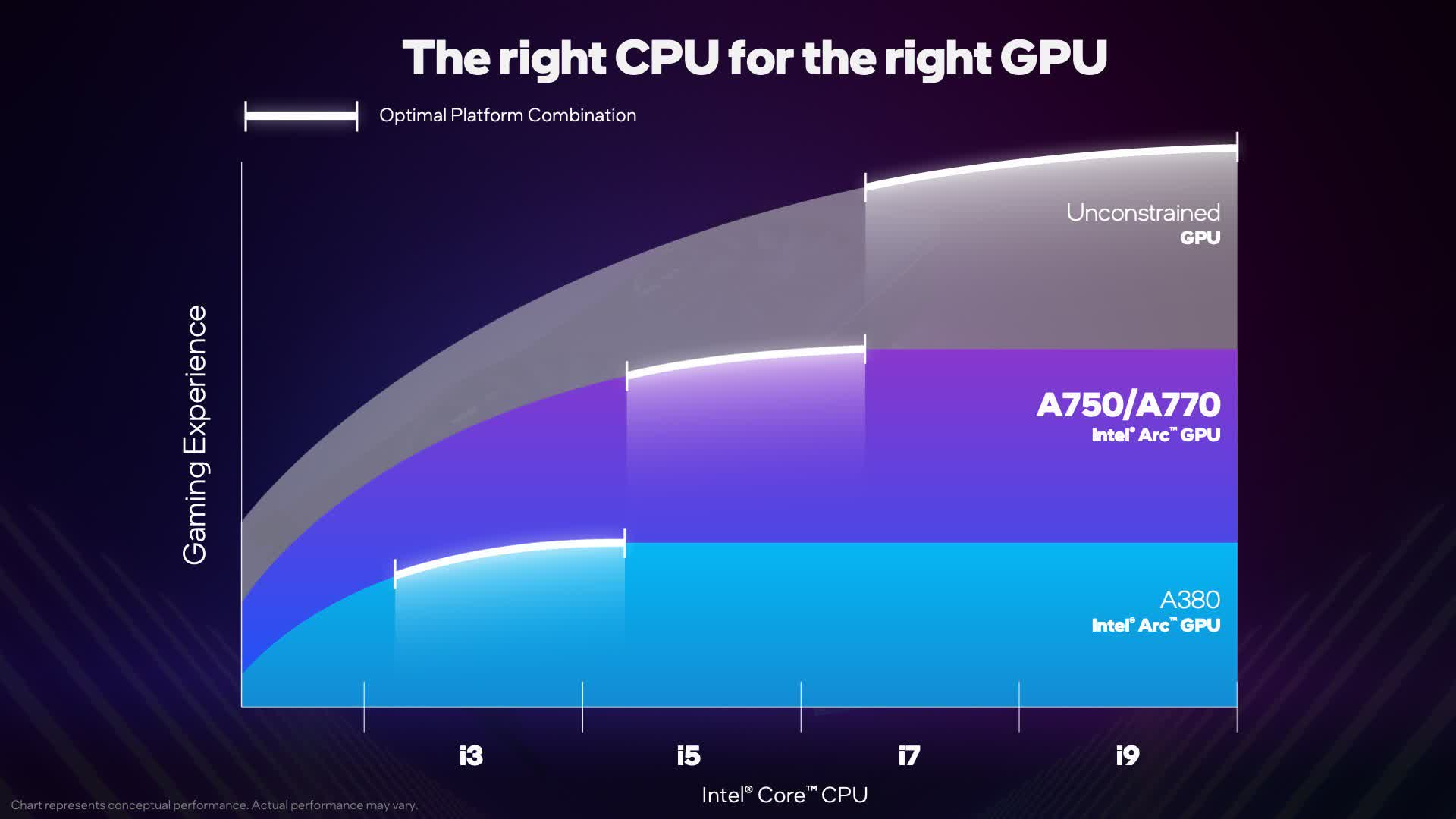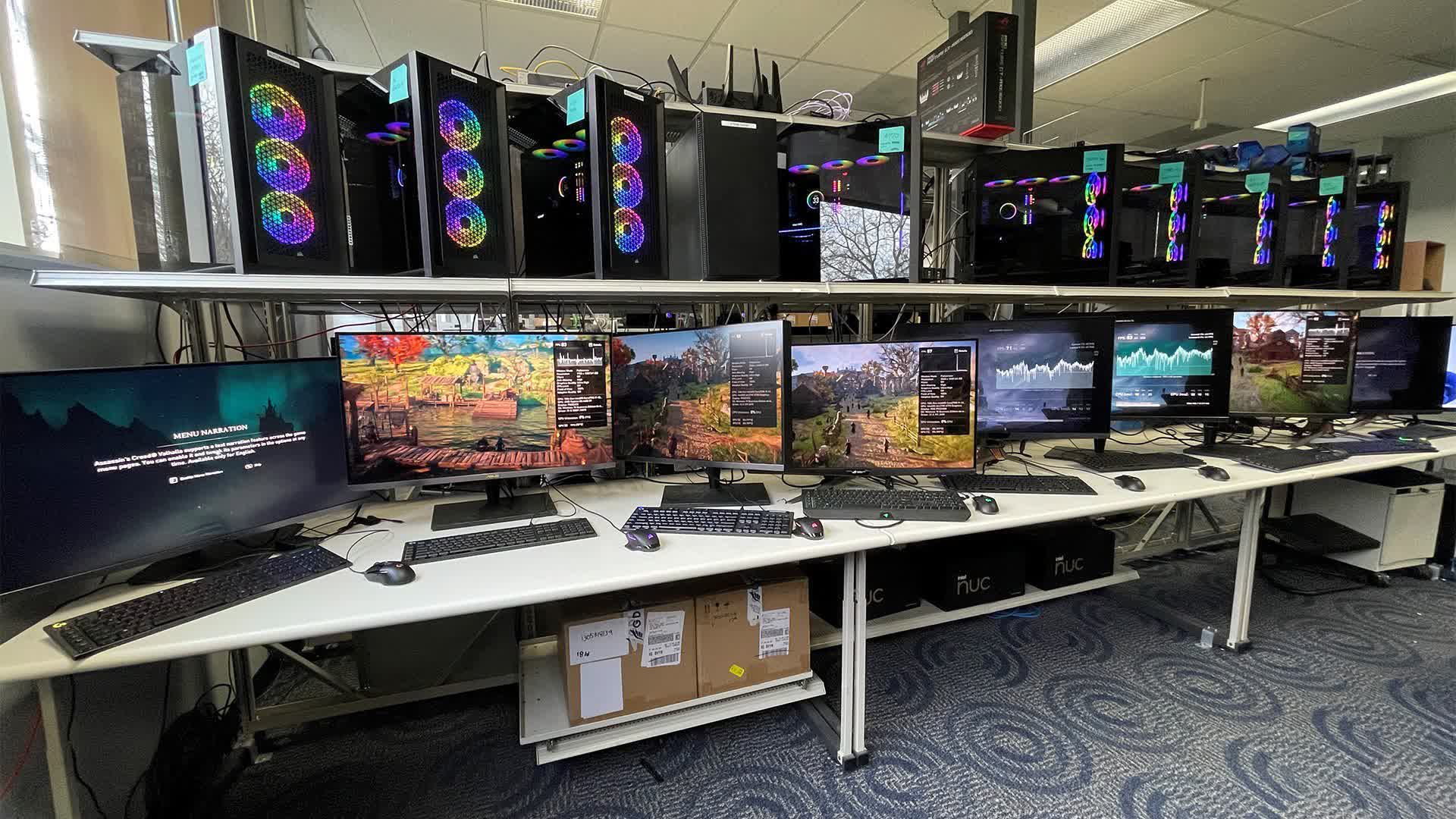In context: Intel's latest attempt to promote its freshman GPU series tries to give users CPU shopping advice while offering new mid-range pre-built systems. Generally, the company is trying to dissuade mid-range GPU owners from splurging on i9s, which might not reach their potential when paired with Arc Alchemist cards.
Intel released a new line of pre-built mid-range gaming PCs to push its Arc Alchemist graphics cards. Accompanying the launch is a detailed analysis advising customers on the best-value CPU and GPU pairings.
The builds are available for US-based buyers at Cyberpower, iBuypower, Maingear, Micro Center, and Skytech Gaming. Most combine the Arc A750 with a 13th-generation Core i5 for around $1,000. The higher-end model pairs the GPU with an i7 at closer to $3,000, but none mention Intel's flagship A770.

Intel justifies its offerings with an internal benchmark collection supporting the idea that the company's top-of-the-line i9 CPUs aren't necessary to get the most out of Arc Alchemist GPUs. TechSpot's analysis shows that, while the Core i9-13900K is the best overall gaming CPU, it's probably not the best value for all games, only showing minor performance advantages over cheaper CPUs in many titles.
According to Intel's chart, the Arc cards reach performance plateaus as users ascend through the i5 and i7 processors. The company claims that the i9's biggest gains only appear with help from an "unconstrained GPU" (i.e., an RTX 4090).
A table comparing 1080p DirectX 12 performance on the A750 in over two dozen titles shows little difference between 13th-Gen i5, i7, and i9 CPUs. However, in DirectX 11 under the same conditions, the i9 does seem to pull away by up to 20 percent in some of the most popular games like Final Fantasy XIV, DOTA 2, Grand Theft Auto V, Rainbow Six Siege, Rocket League, and some others. The gap closes slightly in 1440p, likely due to the GPU taking more of the rendering load.
Important to note is Intel's omission of framerates. The company's charts show performance differences between games and APIs in decimal points. However, a 20 percent gap feels different when trying to play a game at 60Hz compared to eSports competition exceeding 100Hz or 300Hz. After all, our ranking notes that an i9's extra muscle could be most beneficial for competitive play at ultra-high framerates.
Furthermore, Intel is ignoring AMD's CPUs and GPUs in this comparison. It's worth examining how recent Ryzen 5 and Ryzen 7 processors compare to i5s or i7s. Mid-range graphics cards like the RX 6600 also compete closely with the A750. Of course, Intel can't be expected to recommend GPUs from its rivals.
